Witchcraft is commonly defined as the practice of magick. Typically, this takes place in the form of spellcasting. Spells and spellcasting can appear complicated and mysterious.
In fact, casting spells was something I struggled with for a long time. Each spell I saw seemed so different from each-other. Even then I struggled, I couldn’t tell if I was actually casting a spell or just making a fool of myself.
But, in reality, spellwork can be broken down into relatively simple steps and concepts. Once you get a feeling for these steps
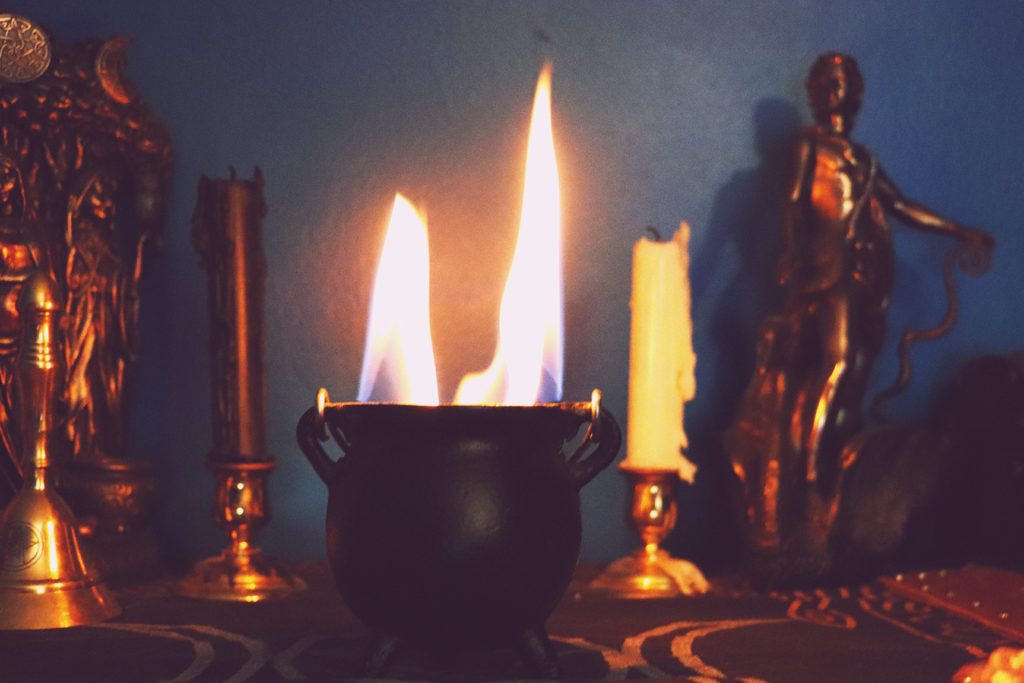
What is a spell?
Simply put, a spell is a set of thoughts and symbolic actions that are performed in order to direct magickal energy and create some sort of result. Spells can be used for a variety of reasons. Whether it’s to attract something, banish something or simply change something in your life.
Beyond that, spellwork helps us learn how energy moves, improve our lives and grow closer to our higher self.
How do Spells Work?
In my opinion, the most difficult part of spellwork is defining how it works. Essentially, everything in the universe has energy. Scientifically this is because all matter is in a state of motion; vibration.
When we do spellwork we are in essence using that energy to influence or change something.
Sympathetic Magick
The concept of Sympathetic Magick outlines that by accessing similarities between two separate things allows us to shape magickal energy to imitate that desired outcome.
This is why Witches use correspondences in spellwork; things like crystals, colors, and plants all have connections to different intents and goals.
Similarly, the Hermetic Principle of Correspondence: “As above, so below; as below, so above” describes the same idea.
In order to do any spell-work it’s important to understand the meaning behind a spell’s instructions.
The 3 Keys to Successful spellwork
In a previous post, I discussed the Witches’ Pyramid and the principles of a magickal mindset. In addition to the Witches’ Pyramid, these 3 keys ideas are necessary for successful spell-work.
One: Belief
First, in order for a spell to be successful, you need to believe in it. Magick occurs primarily in the mind. During spell-work, we shift our consciousness to a
Two: Intent
Second, successful spells require our intent. Our intent is the desire or need for something to occur. And that something is the result we are trying to achieve from a spell. With this in mind, the first step to any spell is forming a well defined goal.
In fact, writing out your intention is a great way to clarify it and start bringing that goal into physical form. The more specific and concise you are, the more likely your spell will be successful.
For example, if you want money, you might try a prosperity spell. But there’s a lot to consider about the specifics. Why do you want the money? If its to pay for something like rent, it helps to ask for that amount. Furthermore, if your intent is a true need for that result to occur, the stronger your intention becomes.
Three: Willpower
Moreover, our intention and desire become the fuel for our will. Frankly, spell-casting is a lot like making a wish. Unlike a wish though, willpower is a command, it turns intent into a statement of what will happen; not what might happen.
When we perform a spell, we enter a different state of consciousness. Our will is what gets us there.
Willpower sets our intent and makes the spell happen. Without it, we’re simply making wishes.
Basic Steps for performing spells
Some spells are more complex than others. Luckily, they all follow a similar set of steps.
At the core of any spell, we shift our mindset, raise magickal energy, direct that energy, and release it.
Preparation, what to do before starting a spell
Before we start casting a spell, there are several things that need to happen. Namely, we need to put ourselves in the right frame of mind, remove distractions, and set the stage.
Frame of Mind
Like I mentioned before, during a spell we shift our consciousness in order to work with magickal energy. But before we do that we need to allow ourselves to start that transition.
As a matter of fact, some witches have rituals to do just that. For example, you may take a ritual bath; visualizing the water washing away any negative or stale energy you’re carrying. Another common method involves smudging yourself with incense to remove that energy.
Although I don’t take ritual baths before spell-work, I do have my own ritual of sorts. I tend to brew myself a cup of really fancy tea, which helps me feel more relaxed yet focused at the same time. After, I’ve had my tea I usually meditate and feel myself slip into the magickal state I need.
Oftentimes a practitioner will meditate before spell-work. That way the practitioner can center their personal power and start altering consciousness.
Centering is an act that involves you balancing the energy inside yourself. Then you can draw your consciousness to a single spot within yourself. And as a result, we achieve the focus necessary for casting a spell.
One technique for centering and balancing uses the 7 chakras. The chakras are major energy centers that are aligned up your spine, beginning at the tailbone and ending at the crown of your head. Chakras are a concept from early Hinduism. Each has different associates and colors.
In essence, meditating before a spell is the most common method to achieve the right mindset. You can even use a mantra or affirmation such as, “I am magickal.”
Removing Distractions and setting the stage
After we enter the right mindset, we’ll need to remove any distractions in our workspace. Silencing phones, turning off the TV and keeping pets out of the workspace are all important steps to take. Magick requires a deep level of focus and these distractions can get in the way.
Now that the distractions are accounted for, we can start “setting the stage.” Besides, this step helps us shift our consciousness.
If you’re working indoors you’ll need to cleanse the space. Not just physical litter, but more importantly, the energetic litter. Negative energy and old intentions can linger in a space. So by
However, when working outdoors it may not be necessary to cleanse the space. There are some steps you should take to finding the right spot, but nature does a good job of purifying its energy.
Usually, I do my spell-work indoors. Prior to a spell or ritual, I need to cleanse my workspace. Luckily, there are numerous ways to do so and they’re pretty simple.
For example, you could smudge the air with incense or Palo Santo, a holy wood from South America that raises vibrations and helps clear the mind.
Another method would be spraying the area with holy or “consecrated” water. You can even use the besom (witch’s broom) to sweep the area in a counter-clockwise (widdershins) motion to symbolically sweep unwanted energies away.
At this point, all of the prep work for spell-casting has been completed. This is the point where the spell-casting truly starts.
Casting a Circle
Typically, spellwork involves “casting the circle of power/protection.” Some believe the circle is only necessary for sacred work or complex spells. Others cast a circle for all spells, no matter how simple they may be.
If you want to learn more about circle casting, check out this post: “The Easy Guide to Casting a Magick Circle”
Graphics from Circle casting post:

Incantation to cast a circle 
Incantation to open the circle 
infographic: basic circle casting ritual
Optional: Calling the Quarters
After the circle is cast many practitioners will “Call the Quarters.” Also known as “Calling the Watchtowers” or simply evoking the elements; this step involves the evocation of the four classical elements.
Some circle casting techniques do this as a part of the casting. Personally, I keep it separate because some of my spells do not involve the elements.
Essentially, calling the quarters allows the elemental energies to bolster the magick circle and empower any spellwork performed within.
Additionally, the elements are considered a part of nature and thus sacred to many Wiccans and witches.
If you want to learn more or use my quarter calling, click here.
Optional: Invite deity and/or nonphysical entities
Now that the circle is cast and the quarters called, you can choose to invite or call on spirits or the Divine. Certainly, this step is not required, you don’t need to believe in the Divine to be a Witch afterall.
However, if you are going to invite spirits into the circle it’s important to know who you’re calling. As well as establishing a connection to them prior to calling.
While some books say you can call any deity or spirit whenever you’d like, it’s rather naive. Spirits are like people, it’s best to form a relationship of some sort before you ask for favors.
Shifting Consciousness
The act of altering our consciousness is rather difficult to explain. Usually, our preparation ritual does the trick. It was the hardest concept for me to understand. Which is why I mention how the prep work before a spell can help us reach the right state.
Altering consciousness sounds a little scary. But it’s entirely natural. As a matter of fact, we do this daily. When we zone out and are day-dreaming we actually shift into an Alpha brainwave. Likewise, the Alpha state is what we want to achieve during spellwork.
The key is to do it on command. There are numerous ways to induce an altered state of consciousness.
Some of the common methods include; meditation, counting backward from 100, repeating a mantra or affirmation, sitting still and focusing on your heartbeat, and using deep breathing techniques.
Raising Magickal Energy
Once we’ve shifted our consciousness, we’re ready to raise the energy for our spell.
Naturally, there is magickal energy already present. This is from your personal power, your emotions and the intention in your mind. As well as elemental energy if you called the quarters.
But at this
Additionally, chanting, drumming, deep breathing, and visualization can raise energy. You can write an incantation outlining your intent and use that as a chant to raise energy as well as set your intent.
This step can go on for as long as you feel you need. Once you get a feel for the energy you’ll be able to gauge when you’re ready.
Directing Energy and Setting Intent
Even though you’ve raised magickal energy, a spell is not yet complete. At this time you’ll need to set your intention and direct the energy to that outcome. Usually, a spell’s symbolic actions will take place at this time.
You might carve sigils into a candle that aligns with your intent. Or perhaps you’ll use crystals, herbs or other correspondences to attract similarities. Some symbolic actions may include creating a poppet or amulet or burning a piece of paper with your intention written on it.
Releasing Energy and completing the spell
Finally, with the energy raised and programmed with your intent, it’s time to release it, completing the spell. At first, this step can feel a little weird; as if it’s too easy. But it truly is a simple act.
This moment might be when you burn or break something. If you created a potion, now’s the time to drink it. But the easiest way is to finish the spell is with a simple affirmation such as “so mote it be” or “In my highest and greatest good the spell is now cast.” This is a declaration of your will declaring that the spell is now cast.
Once the spell is released the last step is to dismantle what remains. Any candles and incense that were used should be snuffed out. Generally, we work through the spell in reverse.
If any spirits or beings were called on you should thank and release them with respect. You may wish to leave an offering, especially when working with deity or faeries.
Next, we dismiss the quarters if they were called, working in reverse by going counterclockwise.
Lastly, we open the circle, traveling in the opposite direction.
What to do afterward?
Now that the spell is finished, you’ll want to ground yourself. Some rituals and spells do this by sharing food or having “cakes and ale.” Food naturally helps to ground excess energy.
The simplest way to do this is to visualize excess energy flowing out of you through your feet or hands and into the earth.
Even though the spell has been cast, there’s one last step that must be taken. This is where the principle “To Keep Silent” returns. Thinking or talking about the spell you’ve just cast can affect the intent. With that in mind, it’s best to forget about the spell and dismiss it from your mind.
Conclusion and Related Posts
In short, spell-casting is having a goal (intention) and believing that by using our will we can create the desired result.
All we have to do is have the right mindset, raise magickal energy, direct it and release it into the world.
Nevertheless, far more goes into true spellwork. Witchcraft and magick require knowledge and discipline. There are ethics to using magick, principles for how it works, and timing that can affect it.
The final key to successful spellwork is preparation. The moon phases, for example, are perhaps the most important force to keep in mind.
Because preparation occurs before spellcasting, I chose not to outline it in this post. Instead the post Spellcrafting discusses these topics.
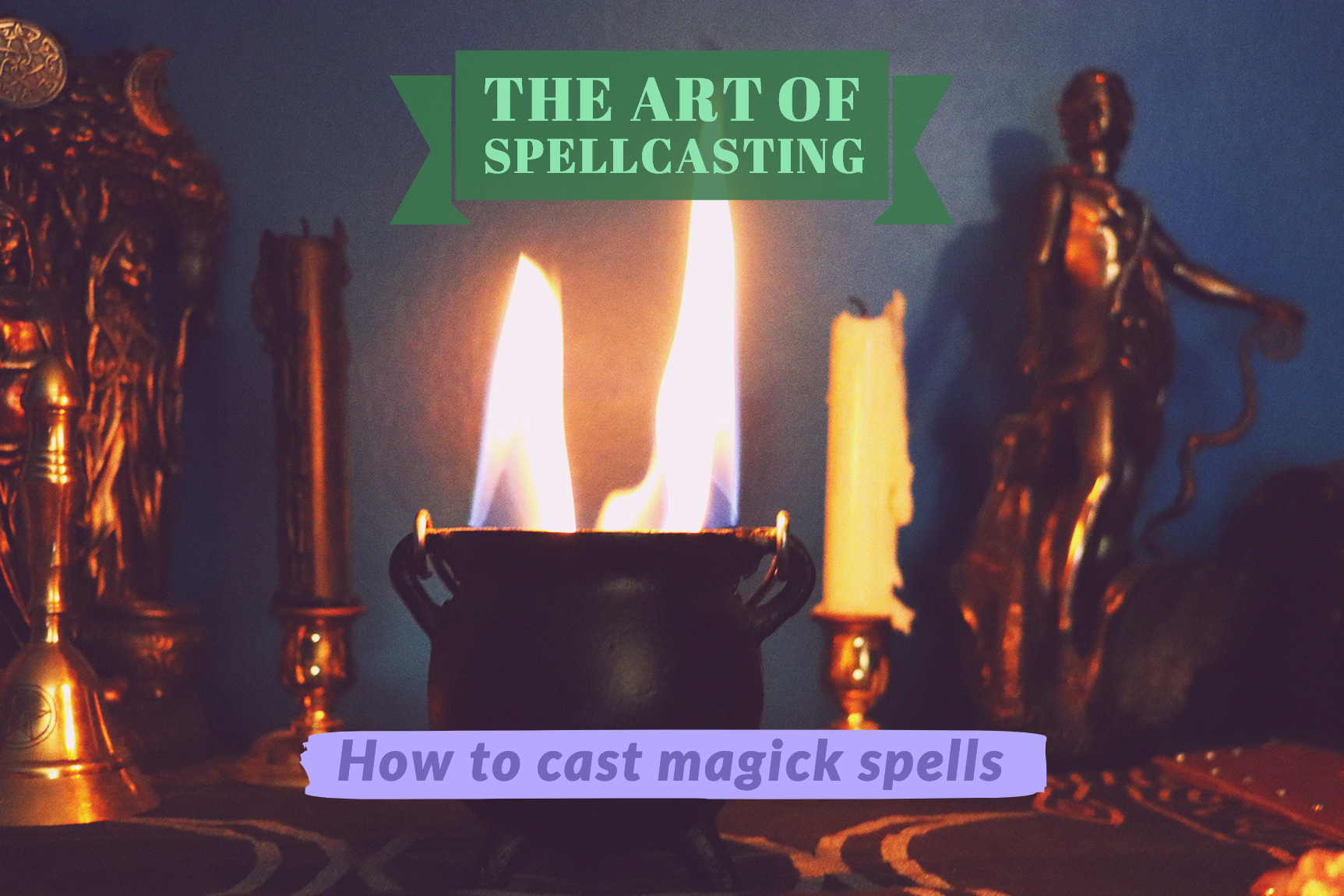
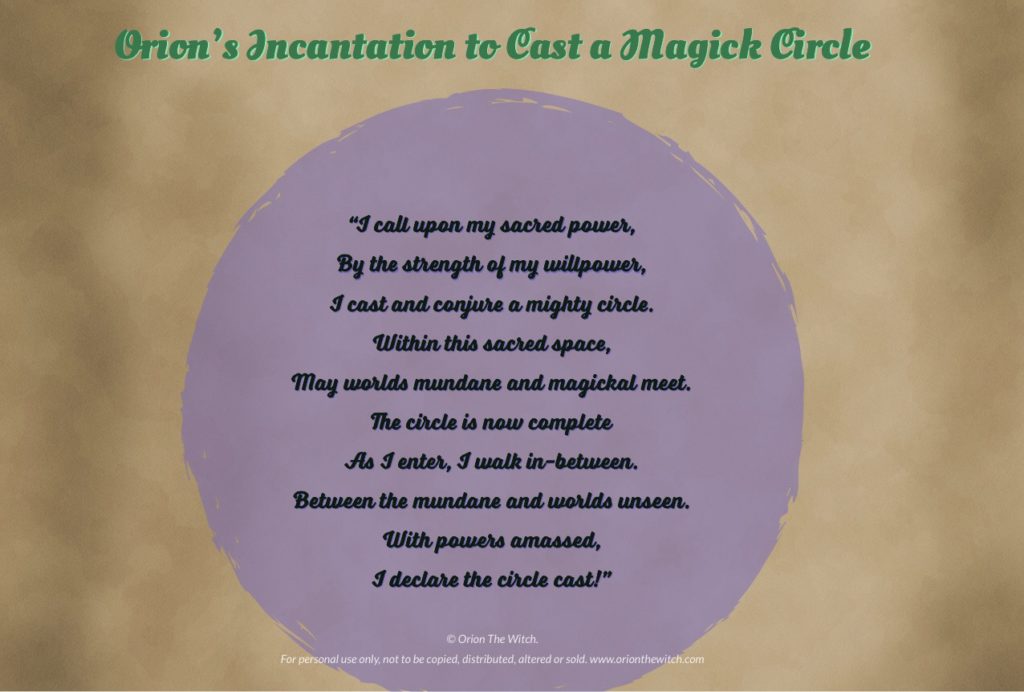
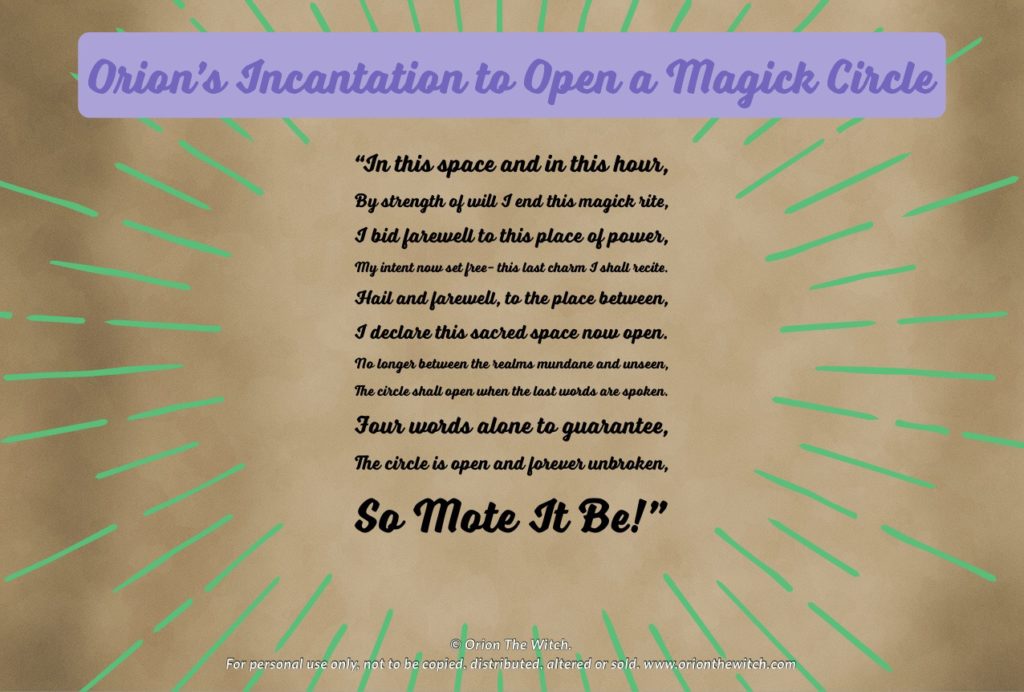
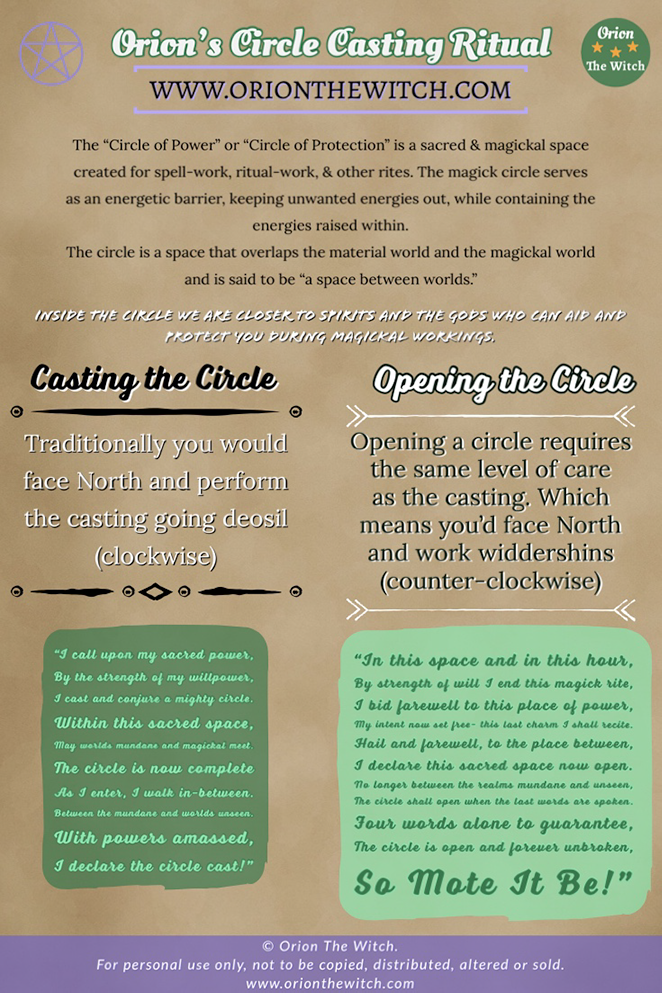
Recent Comments